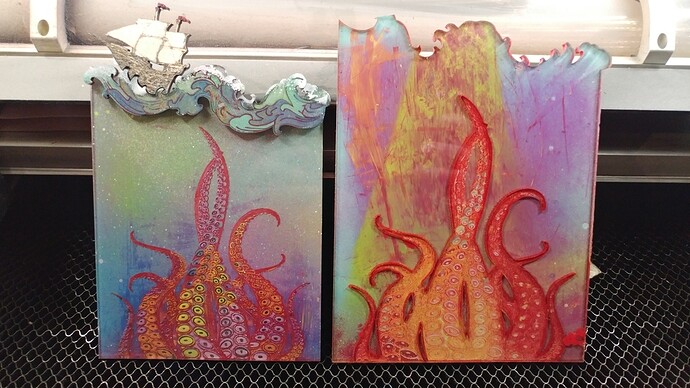I do a ton of acrylic engraving filled with acrylic spray paint. You get much better results with a quality paint like Ironlak, Montana or MTN. They are designed for graffiti work and have higher pigment content than rustoleum etc. They dry fast as well. Of course, if you’re doing small pins using a brush would probably be better, but just showing you an option.
I prefer a bit of a deeper engrave, but that’s just a preference and not really a necessity.
Hobby Lobby carries Ironlak and it’s typically in the framing area and not with the other spray paint. They have a really nice metallic gold and the white is nice and opaque.
The tenticles are painted by engraving each individual color and then painting.
There’s a lot of talk about it here.
